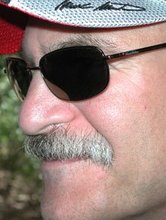Red Fox
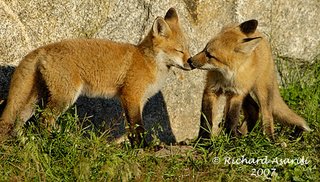
Just a little over a year ago my buddy Gary and I went to check out this fox den we got wind of. Knowing that fox are most active right at dawn we decided to head over to this spot just before sun up. 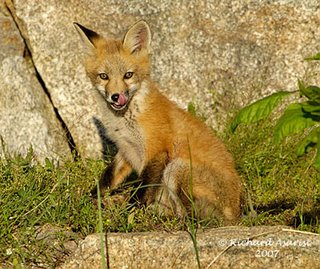
We arrived there about 5:30 am and proceeded to look for these little guys. Actually it didn't take long before we found their den and saw them moving around out side of it playing and eating. The mother and father would bring food in for the pups every so often. 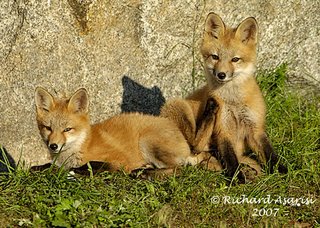
This consisted of things like a rabbit and birds or whatever else they could capture for them. It seemed that these pups were about ready to leave the den any day so we were indeed lucky to even get the chance to photograph them. Fox are a lot like dogs, the young are called pups. Both the male and the female feed the pups through the summer until they are ready to strike out on their own. 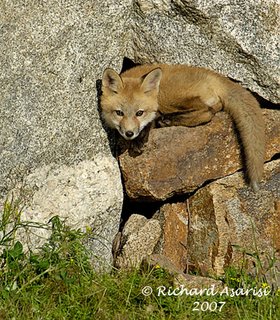
We spent several hours there photographing these guys, it was great fun!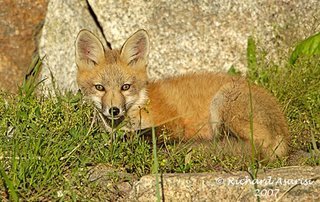
Whitetail Deer
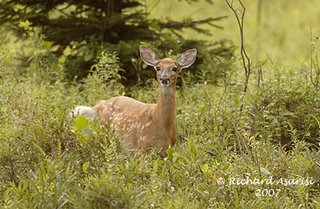
This is a Fawn
Around this area we have one type of deer, known as the Whitetail Deer. Named mostly do to the wave of their tail to signal the sign of danger. They actually use their tail to announce to other deer in the herd that danger is near. So if your walking through the woods and you see a deer running off with the white part of its tail showing you can bet it has found you by your scent or your sounds before you found it.
Deer are also edge browsers, this means that they will mostly stay close to the edge of the woods that border human development. This is mostly do to food being plentiful in those areas.
Of course there are a few other things to know about deer if your going to try and photograph them. For one thing they have an uncanny sense of smell and hearing. Those big long ears are like radar beacons honing in on any little sound. And deer can catch your sent on the breeze for many yards away. 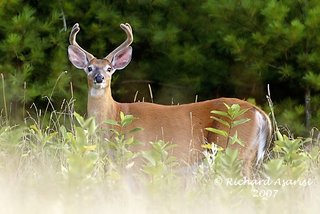
This Buck is about 2 or 3 Years old
The male deer are known as Bucks -- they will usually have antlers -- not horns -- antlers are grown each spring and summer and shed each winter. Female deer are known as Does -- they have no antlers on their head and can usually be found with some young around them. The young are known as fawns, fawns when born in the spring will have spots and will usually keep their spots until the first winter, after which time they are then classified as a yearling Buck or Doe.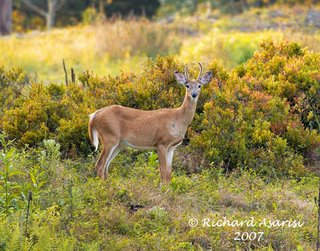
This is a young Buck
Deer are extremely difficult to photograph, the only successful way I have found, is to scout out the area where you know the deer are, several times and learn the routes or paths the deer follow to food or water. Once you have a pretty good idea of the route they travel from one place to another you can set yourself up along their trail in a blind, dressed in camo or both. Its best to disguise your human form as much as possible including your scent.
Of Maine, Moose and Mooseketeers?
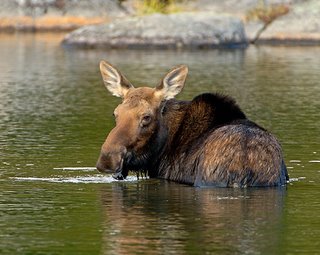
This cow was photographed in October of 2004 at Sandy Stream Pond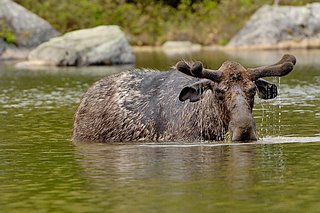
This young Bull was photographed in May of 2007 at Sandy Stream Pond
Just a few years ago, actually 2004, a few of my friends from the New Haven Camera Club invited me to come along on their yearly moose photography outing. This usually takes place around the second or third week in October and usually around the Baxter State Park or Millinocket area of Maine. Baxter State Park is a beautiful place, not only to see moose but to visit and enjoy nature at its finest.
My first moose trip was with Gary Prestash, Tom Cuchara and Bill Bartini. These guys were actually known as the 3 mooseketeers however since I joined them there were four. We changed the name to the 3 mooseketeers plus 1.
We spent many hours enjoying the rural life, looking for moose and just having a grand old time hanging out and joking around.
That year we really didn't see all that many moose but enough for me to get a good look at them and catch the bug that tells you to go find more.
Since that time I have made several trips on my own, with my family and a good friend (Joe Cafasso) we usually head up in the spring. There are advantages to the spring trip, the biggest being that there are many, many moose around. It seems that since they are trying to replenish the nutrients in their body they are out constantly looking for food after the long winter. The down side is that since its spring and warm weather is approaching the moose are shedding their winter coat for a summer one. So they look kind of mangy at best.
So I love tracking down moose and photographing them.
In the fall they have huge antlers that make the search for them rewarding but in the spring there are so many you can't help but find them to photograph.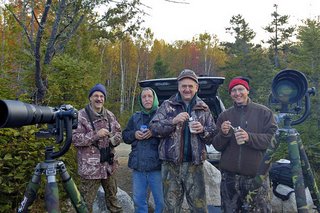
The Mooseketeers!!
Last of the Hummingbirds for 2007?
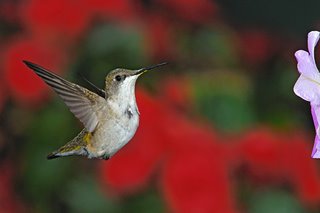
Well its surely sad to see them go. I had a lot of fun photographing these guys this year. It was a bumper crop of hummers for me. In April Gary and I went out to Arizona to photograph them, in June/July we photographed some more in our yard and at Sky Meadow, and in August and September on my deck.
I learned so much about these little guys this year and the best techniques to photograph them with. I enjoyed every chance I got to photograph them and I'm looking forward to doing it again next year.
Bye Bye Hummers I will patiently await your return as you bring the first signs of spring with you!
The Great Hunter
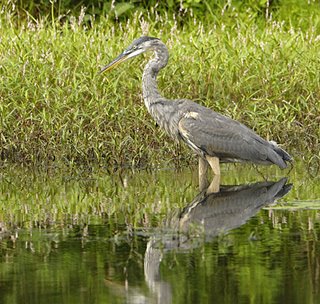
I was out at one of our favorite spots a few days ago. I came across this Great Blue Heron. He started over on the opposite side of the pond from me and slowly worked his way around. I spent the better part of an hour tracking him and taking photos. Here is one that I like, the reflection helps add some to the shot.
